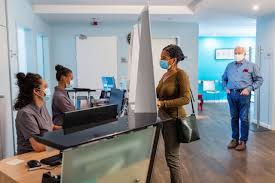Quick, Reliable Care: A Step-by-Step Emergency Room Guide
The most common cares provided at the Emergency Room
Visiting the emergency room (ER) can be a stressful experience. From long waiting times to dealing with an unexpected medical issue, preparing to go to the ER can seem overwhelming. However, it is important to know what you should expect when visiting the ER so you can be best prepared for your visit. Generally speaking, patients can expect a review of their symptoms, a physical exam or diagnostic tests, and treatment options from the ER physician. Depending on the severity of your condition, you may be sent home with follow-up care instructions or be admitted into the hospital for more specialized care. Each visit is different and depends on your individual needs and circumstances. Be sure to have any medical records and insurance information available if possible. Having this information ready will help ensure that your visit runs smoothly and quickly. Please keep reading for details on the following topics:
What happens when one arrives in the emergency room
Tasks performed by the nurse
Some tests may happen at the bedside
Tips to prepare for an emergency room visit

WHAT HAPPENS WHEN ONE ARRIVES IN THE ENERGENCY ROOM
- When someone arrives in the emergency room (ER), they are usually greeted by a triage nurse who collects essential information such as the person’s name, reason for visiting, medical history, and vital signs. The following information will be collected:
- Legal name
- Gender
- Address
- Name of primary health care provider
- Date of birth
- Contact information
- Social Security number
- Name and contact information for the Next of kin
- Reason for visiting
- Conduct Initial Assessment: The nurse conducts an initial assessment of the patient’s condition, including obtaining a detailed history of the complaint, past medical history, family medical history, and any allergies.
- Vital Signs Measurement: Vital signs such as blood pressure, heart rate, respiratory rate, and temperature are measured to assess the patient’s overall health status.
- The nurse assigns a priority level based on the severity of the condition. Depending on the severity of the illness or injury, the patient may see a doctor immediately or be placed in a room to wait while more critical cases are treated first.
- Start IV Line: If indicated, the nurse starts an intravenous (IV) line to administer fluids and medications to the patient.
- Perform Diagnostic Tests: The nurse may perform certain diagnostic tests at the bedside, such as blood tests, EKG (electrocardiogram), and urine tests, to aid in diagnosis and treatment.
- Monitor Patient: The nurse closely monitors the patient’s condition, including their symptoms, vital signs, and response to treatment.
- Provide Comfort and Support: The nurse offers comfort and support to the patient and their family members, addressing any concerns or questions they may have.
- Assist with Procedures: The nurse may assist the healthcare team in performing various procedures or treatments as needed.
- Communicate with Healthcare Team: The nurse communicates effectively with other members of the healthcare team, including physicians, to ensure coordinated care for the patient.
- The patient will be seen by the first available health care team member (ER doctor, resident, non-physician advanced practice provider under the direction of a physician) who will examine him/her and order testing if necessary
- Once the doctor has all the necessary information and test results, they will make a decision about whether the patient needs to be admitted to the hospital or discharged with instructions for further care

Some tests may happen at the bedside
In the emergency room (ER), some diagnostic tests may be conducted at the bedside to promptly assess and address the patient’s condition. These tests are performed to expedite the diagnostic process and initiate appropriate treatment. Here are some examples of tests that may happen at the bedside:
- Electrocardiogram (EKG): A portable EKG machine can be brought to the patient’s bedside to assess the heart’s electrical activity. This test is commonly performed for patients with chest pain or suspected cardiac issues.
- Blood Tests: Bedside blood tests, such as point-of-care testing (POCT), may be conducted to evaluate various parameters, including blood glucose levels, electrolyte levels, and blood gas analysis.
- Urine Testing: Urinalysis or urine culture may be performed at the bedside to assess kidney function, detect urinary tract infections, or evaluate other urinary abnormalities.
- Intravenous (IV) Access: Inserting an IV line for fluid administration or medication delivery is often performed at the bedside by nurses or healthcare providers.
- Basic Imaging: Portable imaging modalities like bedside ultrasound or portable X-ray machines may be used to perform basic imaging studies, such as assessing for fractures, detecting fluid accumulation, or evaluating internal organ abnormalities.
- Continuous Monitoring: Continuous monitoring of vital signs, including heart rate, blood pressure, respiratory rate, and oxygen saturation, can be conducted at the bedside using portable monitors.
-
Other Point-of-Care Tests: Depending on the patient’s presenting symptoms and suspected conditions, additional point-of-care tests or assessments may be performed at the bedside, such as neurological assessments or wound evaluations.
TIPS TO PREPARE FOR AN EMERGENCY ROOM VISIT

-
Seek Care Promptly: During an emergency, it’s crucial to seek care at the nearest emergency department without delay to prevent complications associated with delayed medical treatment.
- Maintain Family Health Records: Keep a copy of all pertinent family health records and documentation, including medications and dosages, vaccinations, allergies, insurance information, and personal identification. Having these records readily available can facilitate the intake process and ensure accurate medical care.
- Bring Entertainment: Bringing something to occupy your time, such as a book or magazine, can help pass the time during what may be a lengthy waiting period in the ER.
- Understand Triage Process: Recognize that ER staff prioritize patients based on the severity of their condition. Patients with life-threatening emergencies will receive immediate attention, while others may need to wait for treatment.
-
Be Patient: Understand that emergency departments can be busy, and doctors prioritize the most urgent cases. It may take time for healthcare providers to assess and treat less critical issues.
Disclaimer: The information provided in this content is for general informational purposes only. It is not intended as medical or healthcare advice, diagnosis, or treatment. Always seek the advice of a qualified healthcare professional with any questions you may have regarding a medical condition or healthcare decisions. ER visit ER visit ER visit ER visit ER visit ER visit ER visit ER visit ER visit ER visit ER visit

